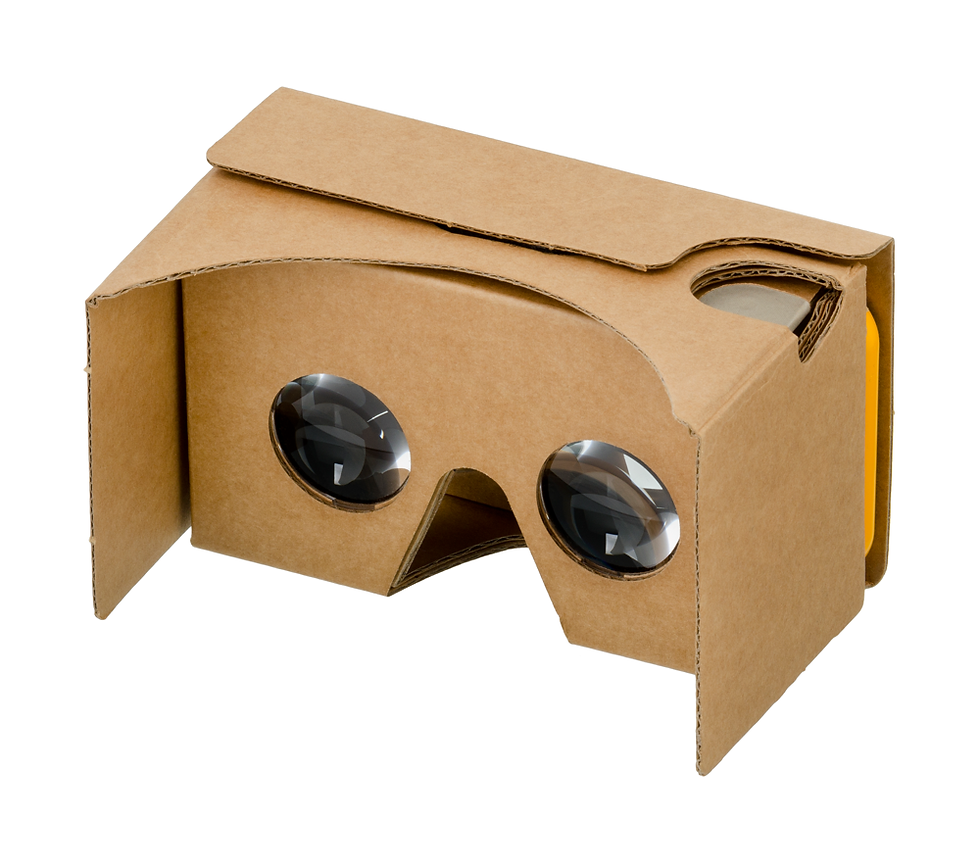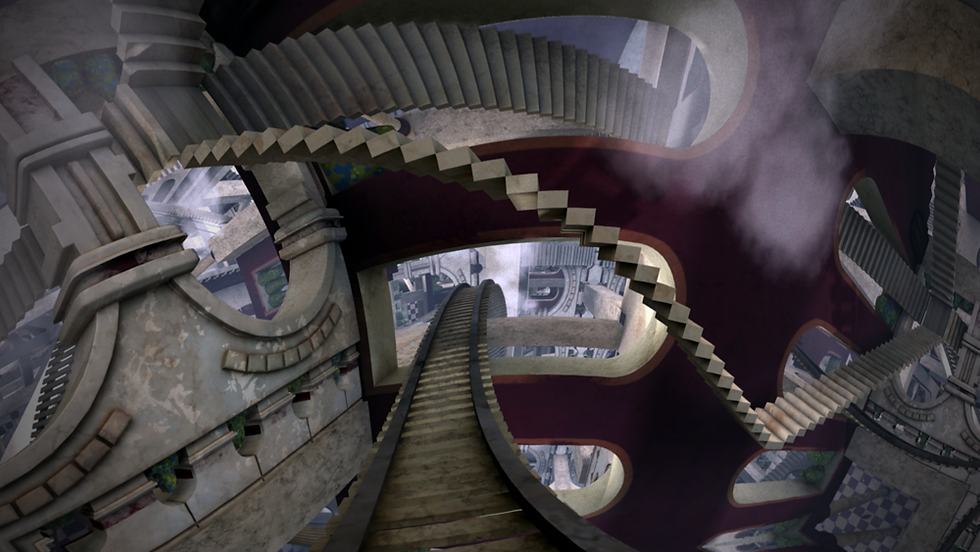Google Cardboard: Does it Help or Hurt VR Adoption?
- Greg Robison

- Nov 1, 2021
- 3 min read
Our recent discussion of Virtual Reality's emergence in 2016 focused specifically on high-end devices like the Oculus Rift, HTC Vive, and Sony's PlayStation VR, that will be the "best" VR experiences on the horizon. But we didn't discuss the other end of the spectrum, right now solely occupied by Google's Cardboard app and associated viewer.
While there is a market for both high- and low-end VR products, does a sub-par experience ultimately hurt the mass adoption of VR? Or does the initial taste of what VR has to offer entice consumers to eventually upgrade to higher-end devices and experiences?
Cardboard is Google's main entry into VR and AR with an Android/iOS smartphone app that provides the processing and display combined with the viewer, either built from Google's specs or from a third party.

This setup allows for an inexpensive experience, pairing nearly any smartphone with the viewer, typically costing less than $20. However, the tradeoff is that the smartphone's ability to track head movements, focus the display and interact with the smartphone/viewer combination is limited. The processing abilities, and thus visual experience, of smartphones is nowhere near the level of high-end computers required to drive the Oculus Rift or HTC Vive. Thus the VR experience of Cardboard is significantly reduced compared to high-end hardware in both visual complexity, immersion and motion sickness (when the display doesn't closely match head movements and/or the refresh rate of the display is low, some people can feel nauseous during the experience). Is this low-cost, but low-end VR experience drive new consumers into the world of VR or does it turn them off of the whole category?
On the one hand, Cardboard's low barrier to entry and the large number of experiences and demos available can give consumers a taste of what VR has to offer. Built into the Cardboard app, VR voyagers can watch 360 degree YouTube videos, fly through Google Earth, check out 360 degree photos and go on tours around the world. A couple of my favorite 3rd party cardboard apps include Titans of Space and the Adult Swim Virtual Brainload.
Titans of Space takes you on a virtual tour of our solar system, getting facts about planets and moon and comparing sizes of celestial bodies. This app highlights the education possibilities of VR.

While the Virtual Brainload provides a trippy virtual experience that moves between the strange to truly bizarre, showcasing an alternate reality.

The free Cardboard app combined with under $20 hardware creates the potential of a huge install base of VR viewers (currently with over 5 million hardware units). The New York Times even gave subscribers a free cardboard with the Sunday edition to help drive VR experiences.
However, Google understands the drawbacks of the Cardboard experience and is rumored to be building a standalone VR device. Paired with Google's Project Tango, which provides 3D sensing technology to help positioning and movement accuracy, this new device could provide an untethered, dedicated VR experience. Most likely, this new device will fill a higher-tier, complimentary space to Cardboard for Google.
Oculus founder Palmer Luckey recently said that the challenge for VR acceptance is "all of us together, against the public perception of virtual reality that's been built up over the decades." Cardboard, unfortunately, doesn't necessarily help in this respect. Sub-par experiences won't help VR's mass acceptance because interest could be lost in VR entirely. Ultimately, consumers’ expectations of and subsequent experiences with Google Cardboard will help determine the acceleration of mass adoption of VR in the next couple of years.
How do expectations and real-world experiences affect uptake? Consider 3D TVs: expectations of an experience similar to the cinema at home, but hassle for little relevant content spelled doom for driving adoption. VR could have a similar fate as 3D TVs - interesting technology that ends up a novelty because of little content to justify the price. Having a low-risk, low-investment, demo-filled option like Cardboard could help justify VR's mass acceptance and usage.
If consumers recognize the deficiencies of Cardboard, it has a real chance of luring consumers into the world of VR, who will then have many options, at different price points and capabilities, in front of them in the coming years.


